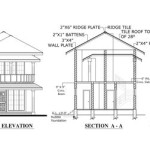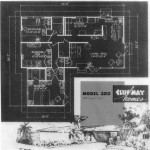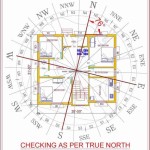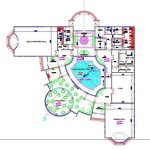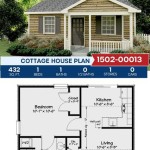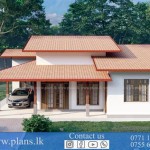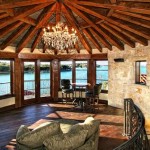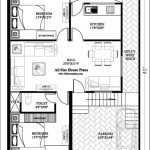Essential Elements of Simple Split Level Home Plans
Simple split level home plans offer a practical and space-efficient layout that seamlessly blends modern design with functional living spaces. These homes feature a distinctive multi-level design, adding depth and flexibility to the overall structure. Whether you're a first-time homebuyer or seeking a family-friendly abode, understanding the key aspects of simple split level home plans is crucial for making informed decisions.
1. Multi-Level Design
The defining characteristic of simple split level homes is their multi-level design. Typically, these homes consist of three main levels: an entry-level, a lower level, and an upper level. The entry-level usually houses the main living areas, such as the living room, kitchen, and dining room. The lower level often accommodates bedrooms, bathrooms, and a family room, while the upper level serves as a private sanctuary with additional bedrooms or a master suite.
2. Flexible Living Spaces
Simple split level home plans are known for their flexibility and adaptability. The multi-level design allows for a variety of room configurations, making it easy to customize the layout to suit your specific needs. The lower level, for example, can be transformed into a guest suite, a playroom for children, or a home office. The upper level can accommodate additional bedrooms, a study area, or a luxurious master suite with a private balcony.
3. Space Optimization
Despite their modest footprint, simple split level homes maximize space utilization through their clever design. The multi-level layout separates different functional areas, creating a sense of privacy and reducing noise levels. Additionally, these homes often feature built-in storage solutions, such as closets, shelves, and drawers, ensuring that all your belongings have a designated place.
4. Natural Light and Ventilation
Many simple split level home plans prioritize natural light and ventilation. Large windows and sliding doors throughout the home allow for ample sunlight, creating bright and airy interiors. Cross-ventilation, facilitated by windows and doors on multiple levels, promotes airflow and reduces the need for artificial lighting and heating/cooling systems.
5. Energy Efficiency
Modern simple split level home plans incorporate sustainable design principles to enhance energy efficiency. Features such as energy-efficient appliances, LED lighting, and insulation in walls and ceilings help reduce energy consumption and lower utility bills. Some plans may also include solar panels or geothermal systems to further minimize their environmental impact.
6. Style and Aesthetics
While simple split level homes focus on functionality, they do not compromise on style and aesthetics. These homes come in a range of architectural styles, from traditional to contemporary. Exterior materials like brick, stone, or siding can be combined with modern elements such as clean lines and large windows to create a visually appealing facade. The interiors are typically characterized by open floor plans, neutral color palettes, and stylish décor.
7. Cost-Effectiveness
One of the main advantages of simple split level home plans is their cost-effectiveness. Compared to other multi-level homes, they require less building materials and labor, resulting in lower construction costs. Additionally, their compact design and efficient use of space can lead to savings on utilities and maintenance over time.

Top Floor Split Foyer Level Remodel Entry

Pin On Floor Plans

Simple Split Level Home Plan 80367pm Architectural Designs House Plans

Multi Level House Plan 4 Bedrms 2 5 Baths 1867 Sq Ft 126 1065

Layout Floor Plans Ranch House Simple

House Plan 68596 Quality Plans From Ahmann Design

Plan 1142 2 Bedroom Bi Level Home With Open Living Space Expandable To 4 3 Bath

New Split Level Designs Hudson Homes

Plan 2080 Bi Level Duplex Small Or Narrow Lot

Plan No E 604 Mid Century Modern Split Level House Plans Craftsman Style Residential Architecture

